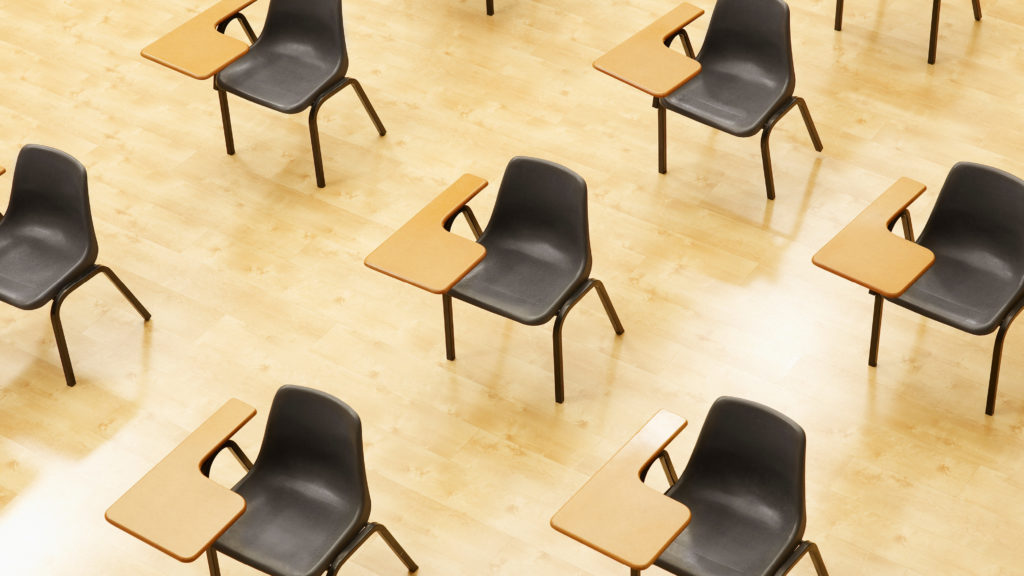Schools have once again been thrust into the national spotlight as education leaders wrestle with changing local health conditions and impossible politics. Against this backdrop, states have emerged as the battleground for how schools will and will not adapt to the crisis and what the results will be for students and their families.
CRPE and Public Impact are wrapping up our review of state reopening plans. If first impressions portend what’s to come, there are big reasons to be concerned.
State reopening plans provide a lot of clarifying guidance on how to protect the health of students and staff. They raise questions for schools and districts to consider in their planning, and provide lists of resources. But along the way, too many states have forgotten they have a role to play in protecting against inaction on student learning. With another year of schooling at risk, this is a huge mistake.
State plans focus on making sense of health and safety requirements
Not surprisingly, state reopening plans provide a lot of information related to different learning scenarios that could reduce transmission rates and promote physical distancing among students. The focus of this guidance is primarily operational. It’s meant to help districts think through necessary changes to facilities, schedules, and transportation to protect the health of students and staff.
Michigan’s reopening plan, for example, outlines a range of safety protocols and requires modifications to the learning scenario (in-person, hybrid or remote) based on the state’s “Safe Start” phased reopening. Georgia recommends alternating schedules for schools in localities experiencing “minimal/moderate spread.” Idaho provides a framework for school district decision-making based on three categories of community transmission, while Kansas offers 30 pages of specific operational recommendations for health and safety in classrooms, common spaces, extracurricular activities, and transportation vehicles. These plans place guardrails around what districts must do to protect human health.
How to support student learning this fall and beyond is too often an afterthought
State reopening plans get a lot weaker when it comes to setting expectations for student learning. As a whole, the plans provide less clarifying information and fewer requirements related to ensuring excellent instruction, assessing student learning needs, and providing support for students.
Some exceptions stand out. Louisiana’s reopening plan guides districts to assess student academic needs at the start of the school year, put transition plans in place for graduating seniors, and create instructional plans using standards-aligned, high-quality curricula. Maryland requires schools to identify learning gaps for returning students and recommends tutoring or small-group instruction for identified students, along with a curated list of resources to guide instructional planning.
More often, states raise numerous questions but fail to prioritize particular problems or strategies. The result is a kitchen sink approach that does little to set expectations, mitigate uncertainty, or narrow the path forward. Kentucky’s plan, for example, includes 21 separate guidance documents. The instructional guidance alone lists 109 questions alongside 58 “risk factors” for districts to consider in their reopening plans. Nevada provides multiple “key consideration” questions for local administrators to answer, along with checklists that suggest they “review” multiple policies and plans.
While they provide comprehensive lists of considerations, these plans fail to signal what’s most important for ensuring student learning.
All told, we saw few plans that established clear expectations for student learning this fall and backed these expectations with a combination of evidence, guidance, money, and other forms of support.
Plans for support and oversight are still developing
The absence of clarity on how student learning should factor into district reopening plans is more worrying in light of the fact that not all states have a strategy for monitoring implementation. Few states have published criteria they will use to evaluate district plans and actions—if they plan to evaluate them at all. Wisconsin provides guidance about how districts might approach reopening but does not require districts to submit a reopening plan. Colorado makes suggestions about how districts can adapt instruction and support students’ emotional well-being but does not require districts to share details about how they will make good on these priorities.
In contrast, states like Michigan and North Dakota evaluate district plans and require that they be posted publicly. Schools cannot reopen in Michigan unless their plan has been approved. In North Dakota, the state education agency will evaluate a representative sample of districts; those found out of compliance have to resubmit a plan.
We have yet to identify a state with an articulated vision for identifying and intervening in schools that struggled to implement instruction during spring closures. States like Alabama and North Carolina do mention the identification and support of low-performing schools in their reopening plan, but only to say they will continue 2019-20 school year designations and intervention plans.
States shouldn’t leave student learning to chance
There is little question that state education leaders have been hamstrung by evolving public health guidance, uncertainty around budgets and funding, and ongoing legislative debates. The task before them is enormous and the path forward is unclear at best.
But the enormity of this moment is why it is so essential that states step in now to ensure that districts offer students meaningful opportunities to learn—whether in person, in a blended model or remotely. If states allow logistical considerations to crowd out everything else, they will place the most vulnerable students at risk of even greater learning loss in 2020-21.
The Center on Reinventing Public Education and Public Impact will be digging into the specifics of state planning over the next several weeks. Watch for our interactive database of state plans and a series of briefs and analyses. Our database will complement existing efforts (here and here) to catalog state guidance and focus on the critical role states can play in ensuring all schools and districts are prepared to support student learning—regardless of what, exactly, school looks like this fall.
It’s not too late for states to put in place expectations about what must happen next.





